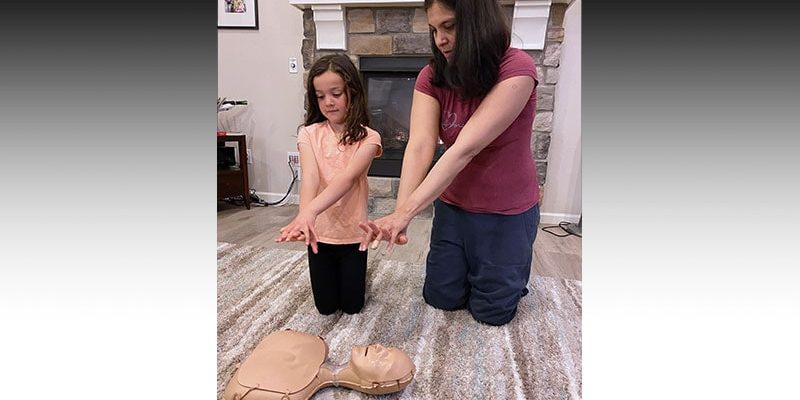Young children can be taught basic lifesaving skills, such as recognizing a cardiac arrest, calling for help, and performing cardiopulmonary resuscitation (CPR), concludes a scientific statement from the International Liaison Committee on Resuscitation (ILCOR), the American Heart Association (AHA), and the European Resuscitation Council (ERC).
“Training students has become a key element to increase the number of people ready to perform CPR when cardiac arrest occurs outside of a hospital, and potentially increase rates of CPR and cardiac arrest survival globally,” writing group chair Bernd W. Böttiger, MD, with University Hospital of Cologne, Germany, says in a news release.
“Building skills at a young age that are reinforced consistently throughout their years in school has the potential to educate generations of students and their parents on how to respond to cardiac arrest, perform chest compressions and rescue breaths, use an AED [automatic external defibrillator] and ultimately increase survival,” adds writing group member Comilla Sasson, MD, PhD, vice president for science and innovation at the AHA.
The statement was published online May 17 in Circulation.
The writing group reviewed the literature on teaching school-aged children basic life support (BLS) to identify “best practices” to help children master various skills that are part of the cardiac arrest “chain of survival.”
Among the key findings and recommendations:
School-aged children are highly motivated to learn and perform BLS and share their knowledge with other children.
The “CHECK-CALL-COMPRESS” algorithm is recommended for all schoolchildren.
Children as young as age 4 years are able to assess the first links in the chain of survival.
Children as young as 6 years are able to dial the emergency number and give the correct information after training.
By age 10 to 12, effective chest compression depths and ventilation volumes can be achieved on training manikins.
A combination of theoretical (cognitive) and practical (psychomotor) training works best.
Train all schoolchildren in BLS annually, regardless of age; schoolteachers serve as effective BLS instructors.
Use of age-appropriate social media tools for teaching BLS has shown promise for children of all ages.
“Kids Can Save Lives”
Out-of-hospital cardiac arrest is a leading cause of death worldwide. Survival rates range from 2% to 20% globally and are particularly low without immediate recognition and action from a bystander, the writing group notes.
Even if children are too young or too small to perform effective chest compressions, they can begin learning the steps and rhythm for proper CPR and can begin to learn about AEDs, they add.
They encourage all families to have a cardiac emergency response plan in place and to plan ahead to determine who will call 911, who will start CPR, and who will open the door to emergency responders.
“Given that most cardiac arrests outside of a hospital will happen at home, it’s important that all members of the family understand what to do if someone has a cardiac arrest,” Sasson says.
Zachary Hena, MD, who wasn’t involved in developing the statement, praised the group for their “incredible” report.
“With survival rates of 2%-20% for out of hospital cardiac arrest, this study delineates the significance of children and their ability to respond not only in a timely manner but also provide care in a critical period for a patient or possibly even a friend or family member,” Hena, a pediatric cardiologist at Hassenfeld Children’s Hospital at NYU Langone, said in a statement.
“A 4-year-old can call for help, a 6-year-old can dial 911, and many school-age children would be able to give effective compressions. All will likely be able to assess if someone is conscious and not breathing and implement CHECK-CALL-COMPRESS to check for consciousness and breathing, call for help or 911, and start compressions,” Hena said.
“We know the time from when someone is down to time to starting chest compressions and/or delivering an effective shock, if necessary, improves survival and outcomes. Effectively kids can save lives from this study and more importantly kids will save lives,” Hena added.
Circulation. Published online May 17, 2023. Abstract
For more news, follow Medscape on Facebook, Twitter, Instagram, and YouTube
Source: Read Full Article
